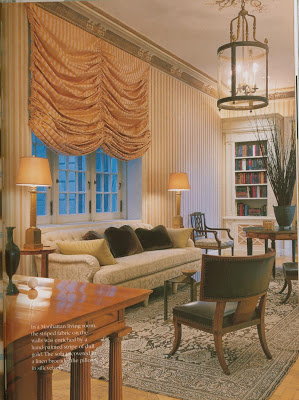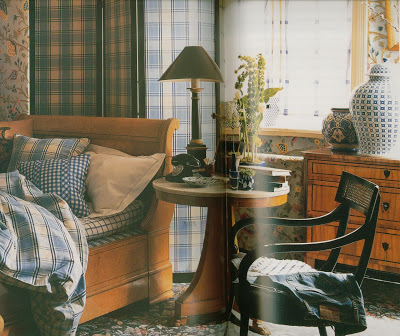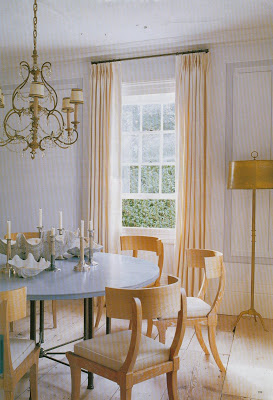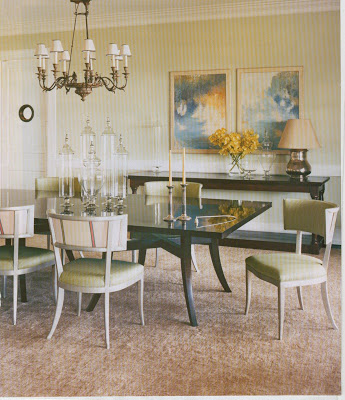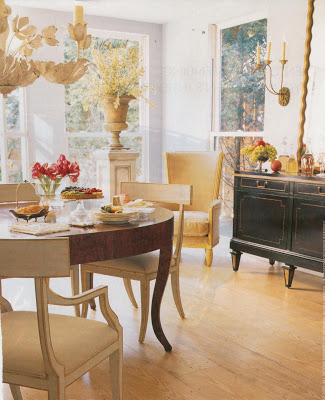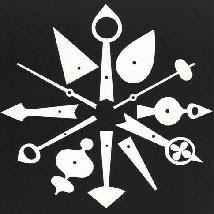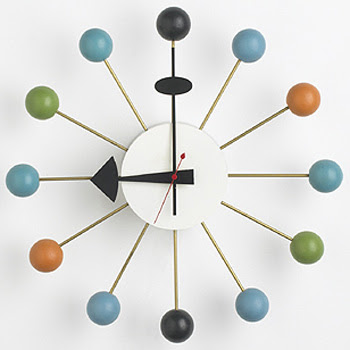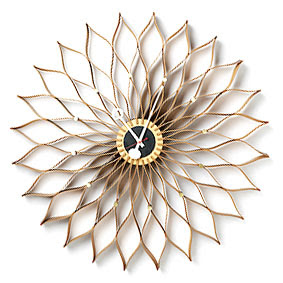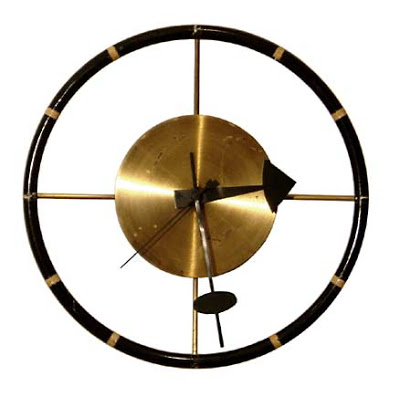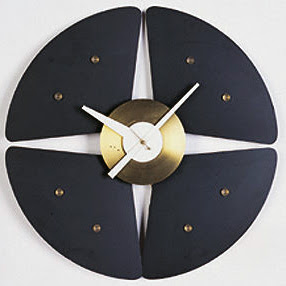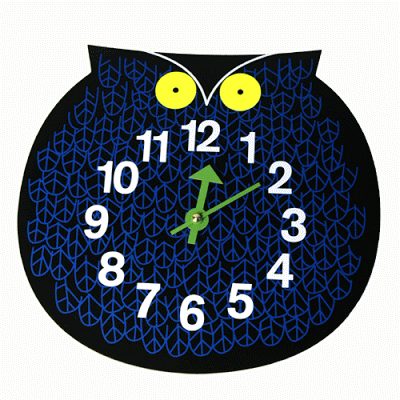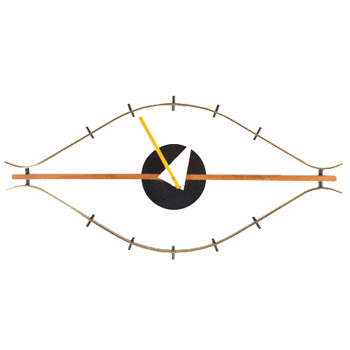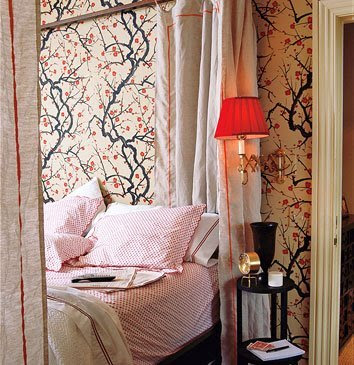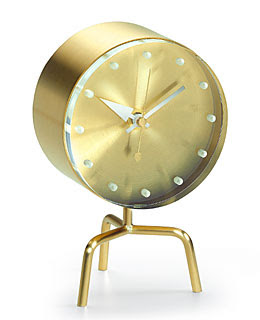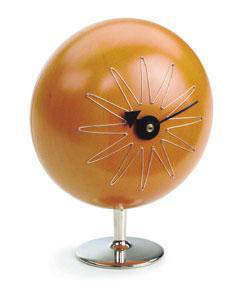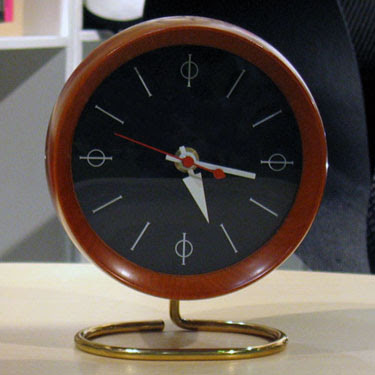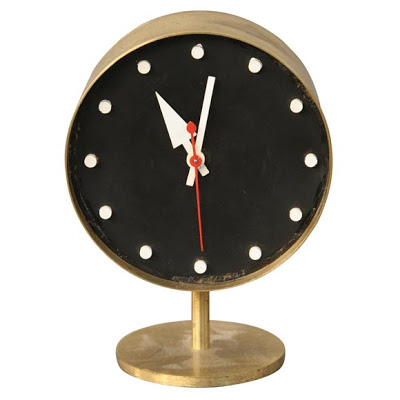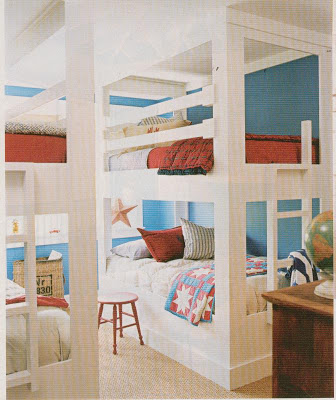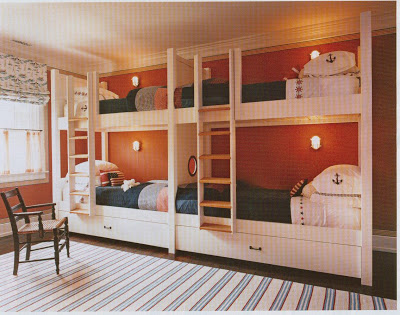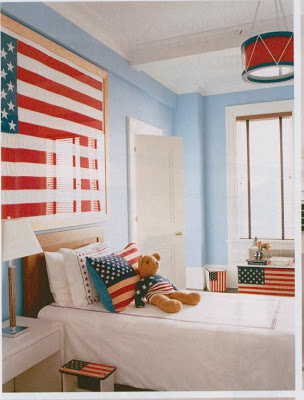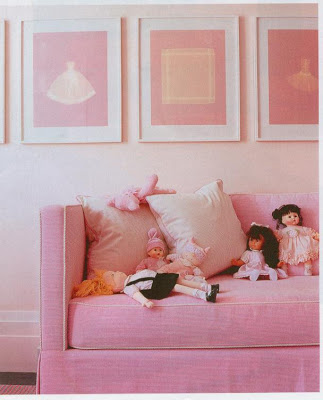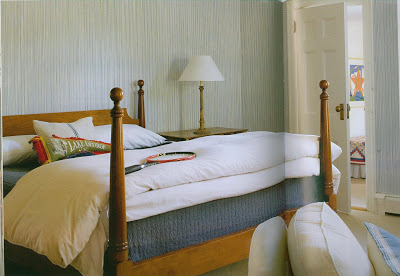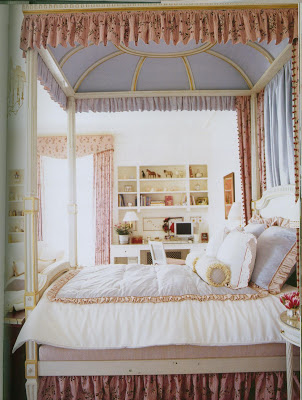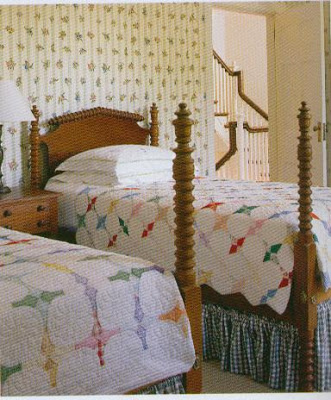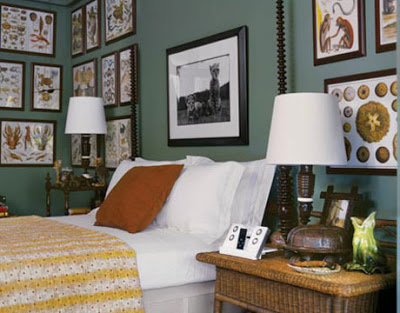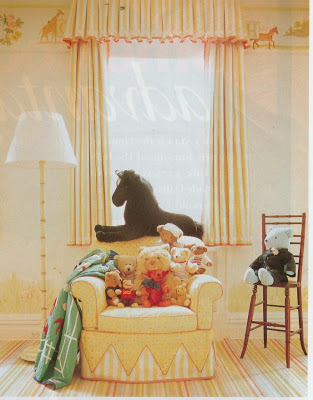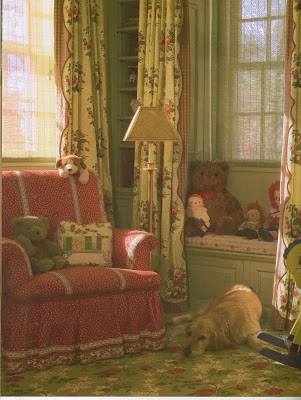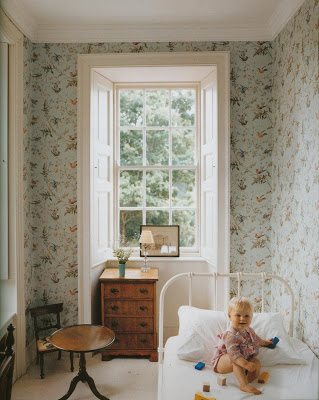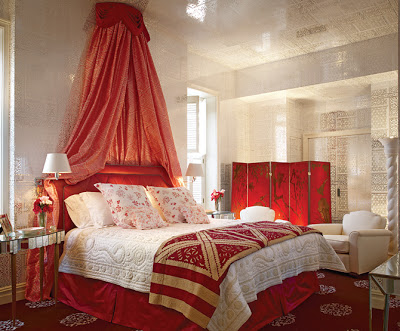
One of my readers e:mailed a couple of weeks ago to see if I recognized the Brunschwig & Fils wallpaper, above. I didn’t, but I was so charmed by her e:mail, that I set off on a bit of a quest. I didn’t really think it would be that tricky. She already knew that the paper had been used in this project and Britt’s beach house. This layout was in Architectural Digest in February of 2007. She had contacted AD (why, oh why do they refuse to do any resourcing?) but, as of today, they have not responded.
The article, and the information on the website, do identify the paper as B&F, so I e:mailed the image to our showroom here. Designers Only is owned by a well-respected designer in town and her staff is always gracious and lovely. Sure, happy to help, get right back to you. (I’m including other images from the story so you don’t get bored reading my text.)
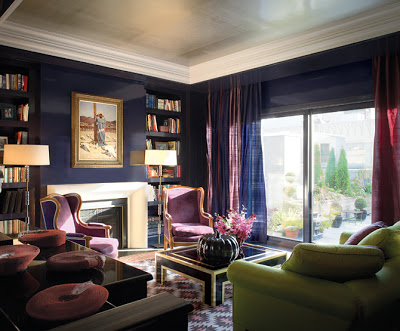
Nothing. No one recognized it. But, as kind people often do, they took it to the next step and e:mailed the image to the B&F showroom in Chicago. Nada.
Curiouser and curiouser. So, I picked up the phone and called Tom Britt. Well, why not? We’re not exactly tight, but, you know, he’s from Kansas City, I live in Kansas City…
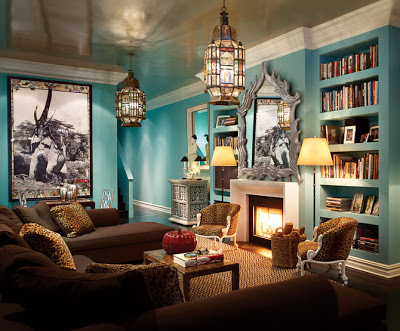
I talked to a woman in his office. Nice. Professional. Could I e:mail the image? Fax? Well, yes, I could fax it. As of today I have not heard back. I get it. They’re busy. Getting published in AD and things like that while my calendar today reads, “Stop Rosie’s meds.” You know, because of the allergy test next week. (If you are new to the site, she is my itchy boxer pup. Mr. Blandings has taken to calling her a lemon, but she’s beloved.)
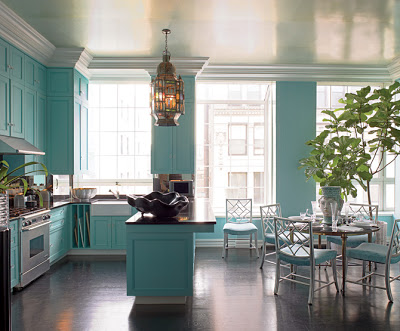
So, now I turn to you, gentle readers. Can we help Barbara? She’s been so patient. And optimistic. (She contacted AD!) I’m constantly in awe of the knowledge bouncing around out there. Look again. Silver and white, somewhat Moorish, clearly not boorish. We can all get a little fixated and we need to help Barbara, and her master bedroom, move on. Anyone? Bueller? Anyone?


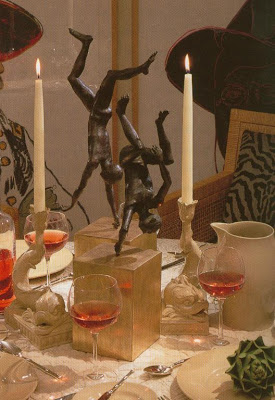
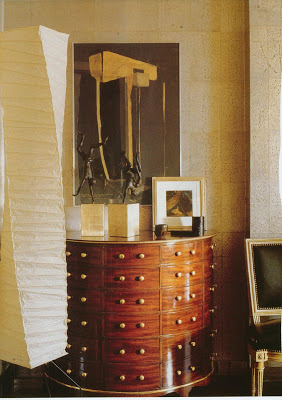 House and Garden, March, 1992.
House and Garden, March, 1992.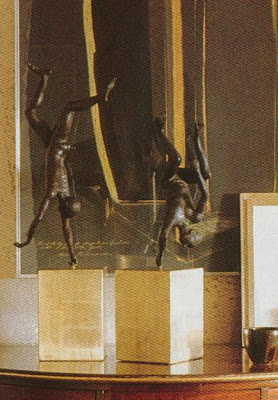
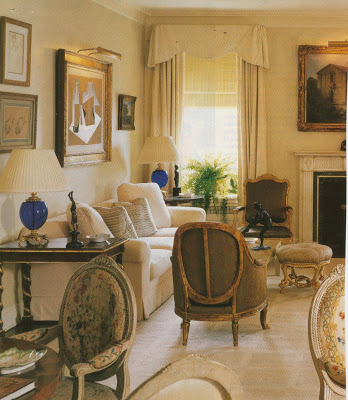
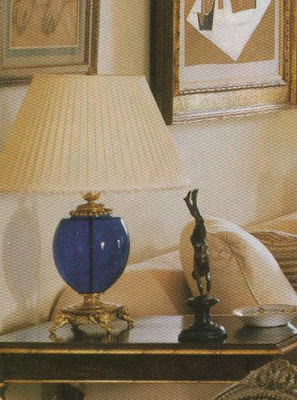
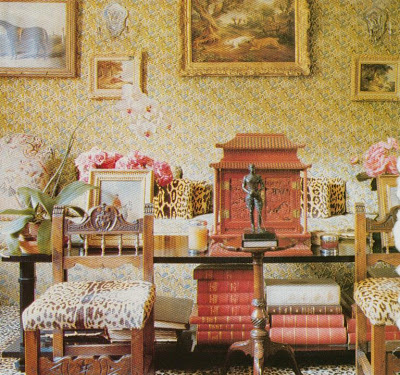
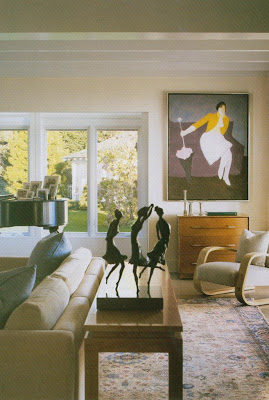 This image and the one below, Mariette Himes Gomez, Houses: Inside and Out.
This image and the one below, Mariette Himes Gomez, Houses: Inside and Out.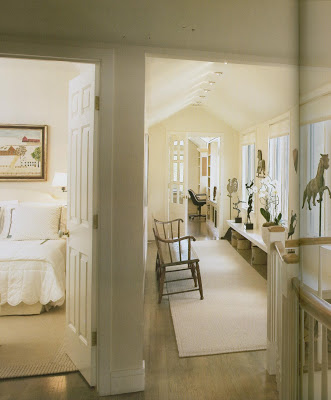
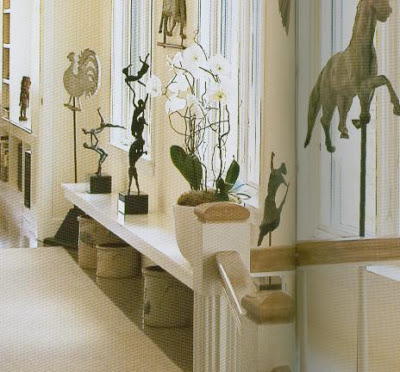
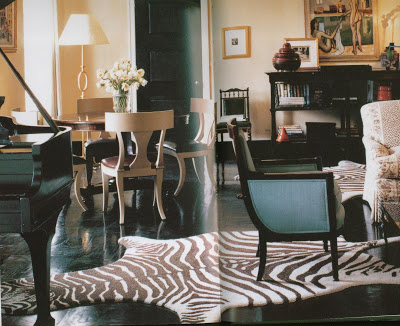
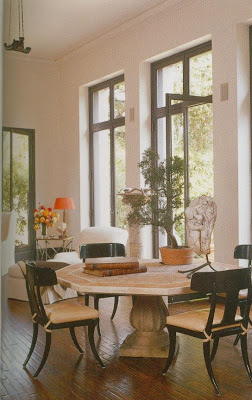 Mark Weaver in Rooms to Inspire, Annie Kelly.
Mark Weaver in Rooms to Inspire, Annie Kelly. Rooms to Inspire, Annie Kelly.
Rooms to Inspire, Annie Kelly.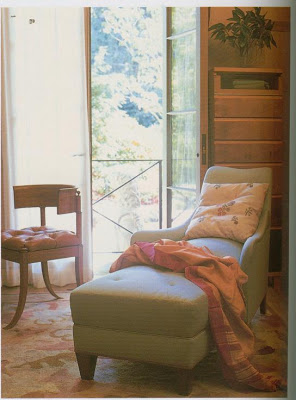
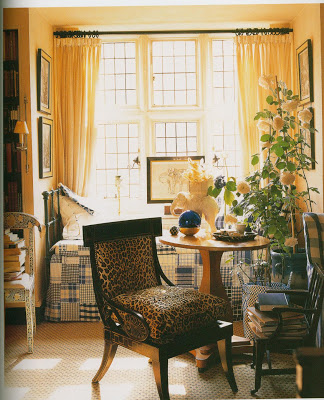 The late Roger Banks Pye, Colefax and Fowler Interior Inspirations.
The late Roger Banks Pye, Colefax and Fowler Interior Inspirations.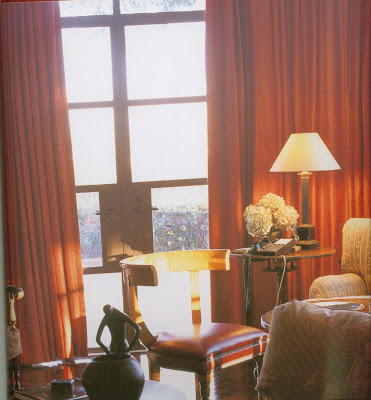 Michael S. Smith in his book, Elements of Style.
Michael S. Smith in his book, Elements of Style.